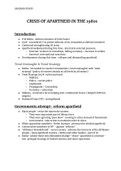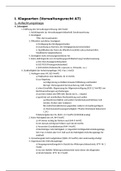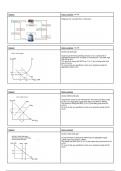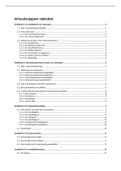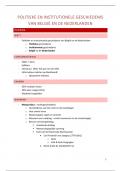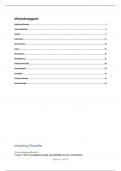SANJANA VINOD
CRISIS OF APARTHEID IN THE 1980s
Introduction
● P.W Botha- defence minister of John Voster
● 1978- succeeded J.V as prime minister of SA (remained as defence minister)
● Continued strengthening SA army
● Apartheid weakened during this time- internal & external pressure.
○ Internal: violence in townships, falling economy + increase in strikes
○ External: international sanctions
● Developments during this time- collapse and dismantling apartheid.
Total Onslaught & Total Strategy
● Botha- SA needed to counter Communists ( total onslaught) with ‘total
strategy’ (policy of counter attacks at all levels by all means)
● Total Strategy (1978-1989) and used:
○ Military
○ Police + secret police
○ Legislation
○ Propaganda + Censorship
○ Economy + education
● Military- involved a lot in helping anti-communist forces ( helped UNITA in
Angola).
● National Party (NP)- strengthened
Governments attempt- reform apartheid
● Black people- resist the repressive system:
○ They were important part of labour force
○ They were ignoring ‘pass laws’- moving to cities instead of homelands
○ Government- take action to maintain order in cities.
● White opposition members- Helen Suzman- pressured to abolish apartheid.
● Conservative members of NP - against ‘reforms’.
● ‘Afrikaner Broederbond’- secret society- advance the interests of the Afrikaans
people + keep apartheid in place. ( Botha and other leaders- part of it)
● Botha- please those who demanded change + those- apartheid to continue -
two-pronged strategy of limited reforms and more repression.
, SANJANA VINOD
Botha’s Reforms (1980-1986)
1. Legalisation of Black TU - in 1979 - it would play an important role in
improving industrial relations.
2. Increased expenditure on Black education - 1981- followed by a gradual
equalisation of expenditure on all education.
3. Passing of Black Authorities Act - 1982- amended the Urban Bantu Act + gave
Black urban communities- elect own councillors.
4. Passing of Republic of South Africa Constitution Act (1983) & resulting in the
Tricameral Parliament (1984) - Coloured and Indian- vote for government
ministers.
5. Abolishment of job reservations - 1984 - reserving jobs- limit economic
growth.
6. Abolishment of the Immorality and Prohibition of Mixed Marriages
Amendment Act - 1985- mixed raced people - get married + sexual
relationship.
7. The Reservation of Public Amenities Act was relaxed - public facilities were
gradually desegregated.
8. Private schools were desegregated -1985- Black, Indian and Colured people
could send their kids to fee-paying schools. (Publicly-funded schools were still
segregated- 1980s)
9. Pass Laws repealed -1986- no restriction of movement but Group Areas Act
remained so residential areas- segregated.
● These reforms:
○ increased security measures- stop resistance.
○ Win support of black middle class
○ Appeasewestern powers- apartheid look less racist
● The reforms were superficial - met with growing resistance + gov responded
with increased repression.
Contradictions of Aprtheid Emerge:
● By late 1970s- clear apartheid policies- holding back economy.
● Contradictions in the system: creation of homelands, labour laws + pass
systems.
● Homelands could not support themselves economically:
○ Economically and politically linked to SA
○ Cost of maintain them- too expensive
● One of the central contradictions- segregation + control of labour. Cities
needed African workers but their presence was limited through pass laws.
These measures- difficult for permanent skilled labour force.
CRISIS OF APARTHEID IN THE 1980s
Introduction
● P.W Botha- defence minister of John Voster
● 1978- succeeded J.V as prime minister of SA (remained as defence minister)
● Continued strengthening SA army
● Apartheid weakened during this time- internal & external pressure.
○ Internal: violence in townships, falling economy + increase in strikes
○ External: international sanctions
● Developments during this time- collapse and dismantling apartheid.
Total Onslaught & Total Strategy
● Botha- SA needed to counter Communists ( total onslaught) with ‘total
strategy’ (policy of counter attacks at all levels by all means)
● Total Strategy (1978-1989) and used:
○ Military
○ Police + secret police
○ Legislation
○ Propaganda + Censorship
○ Economy + education
● Military- involved a lot in helping anti-communist forces ( helped UNITA in
Angola).
● National Party (NP)- strengthened
Governments attempt- reform apartheid
● Black people- resist the repressive system:
○ They were important part of labour force
○ They were ignoring ‘pass laws’- moving to cities instead of homelands
○ Government- take action to maintain order in cities.
● White opposition members- Helen Suzman- pressured to abolish apartheid.
● Conservative members of NP - against ‘reforms’.
● ‘Afrikaner Broederbond’- secret society- advance the interests of the Afrikaans
people + keep apartheid in place. ( Botha and other leaders- part of it)
● Botha- please those who demanded change + those- apartheid to continue -
two-pronged strategy of limited reforms and more repression.
, SANJANA VINOD
Botha’s Reforms (1980-1986)
1. Legalisation of Black TU - in 1979 - it would play an important role in
improving industrial relations.
2. Increased expenditure on Black education - 1981- followed by a gradual
equalisation of expenditure on all education.
3. Passing of Black Authorities Act - 1982- amended the Urban Bantu Act + gave
Black urban communities- elect own councillors.
4. Passing of Republic of South Africa Constitution Act (1983) & resulting in the
Tricameral Parliament (1984) - Coloured and Indian- vote for government
ministers.
5. Abolishment of job reservations - 1984 - reserving jobs- limit economic
growth.
6. Abolishment of the Immorality and Prohibition of Mixed Marriages
Amendment Act - 1985- mixed raced people - get married + sexual
relationship.
7. The Reservation of Public Amenities Act was relaxed - public facilities were
gradually desegregated.
8. Private schools were desegregated -1985- Black, Indian and Colured people
could send their kids to fee-paying schools. (Publicly-funded schools were still
segregated- 1980s)
9. Pass Laws repealed -1986- no restriction of movement but Group Areas Act
remained so residential areas- segregated.
● These reforms:
○ increased security measures- stop resistance.
○ Win support of black middle class
○ Appeasewestern powers- apartheid look less racist
● The reforms were superficial - met with growing resistance + gov responded
with increased repression.
Contradictions of Aprtheid Emerge:
● By late 1970s- clear apartheid policies- holding back economy.
● Contradictions in the system: creation of homelands, labour laws + pass
systems.
● Homelands could not support themselves economically:
○ Economically and politically linked to SA
○ Cost of maintain them- too expensive
● One of the central contradictions- segregation + control of labour. Cities
needed African workers but their presence was limited through pass laws.
These measures- difficult for permanent skilled labour force.


